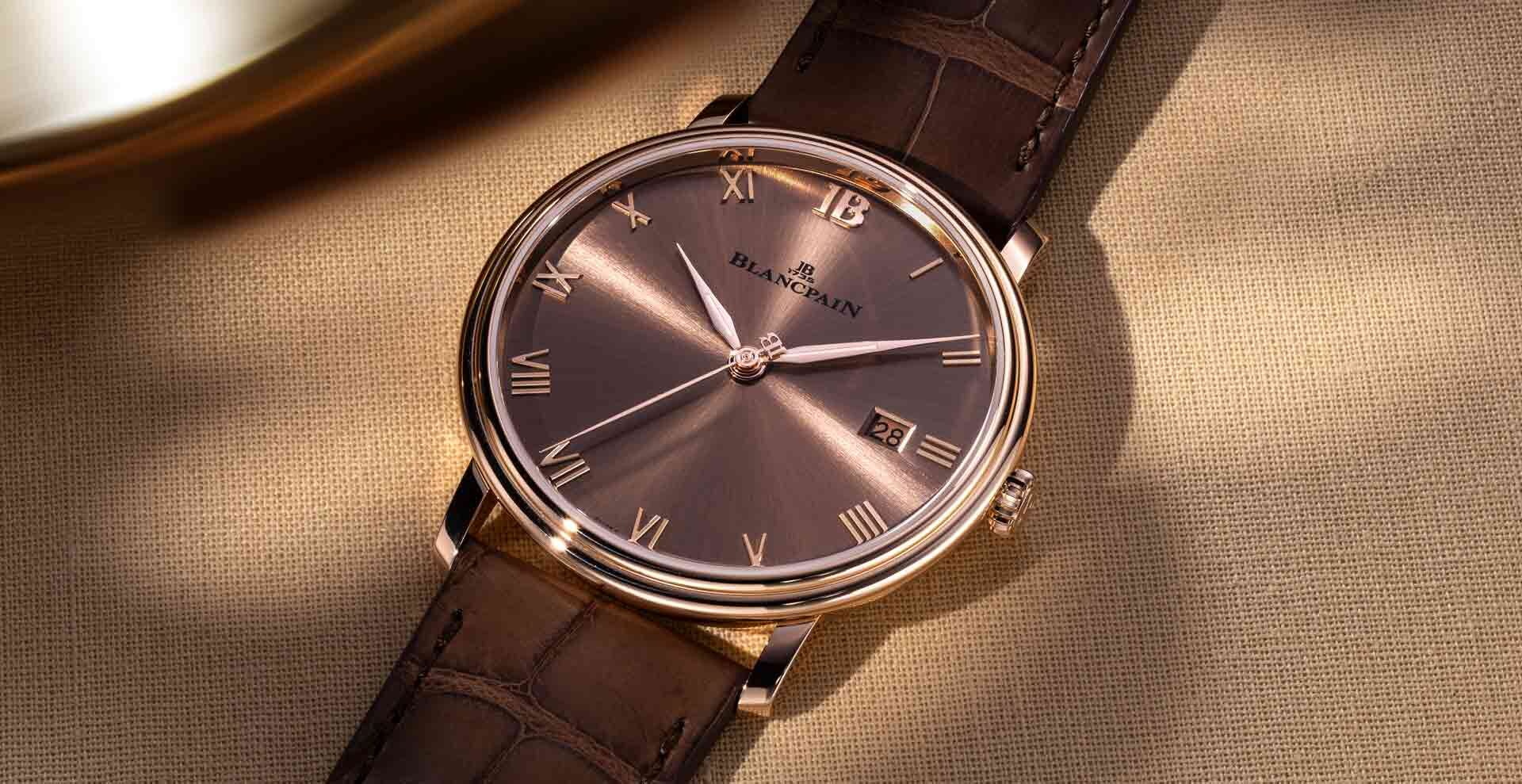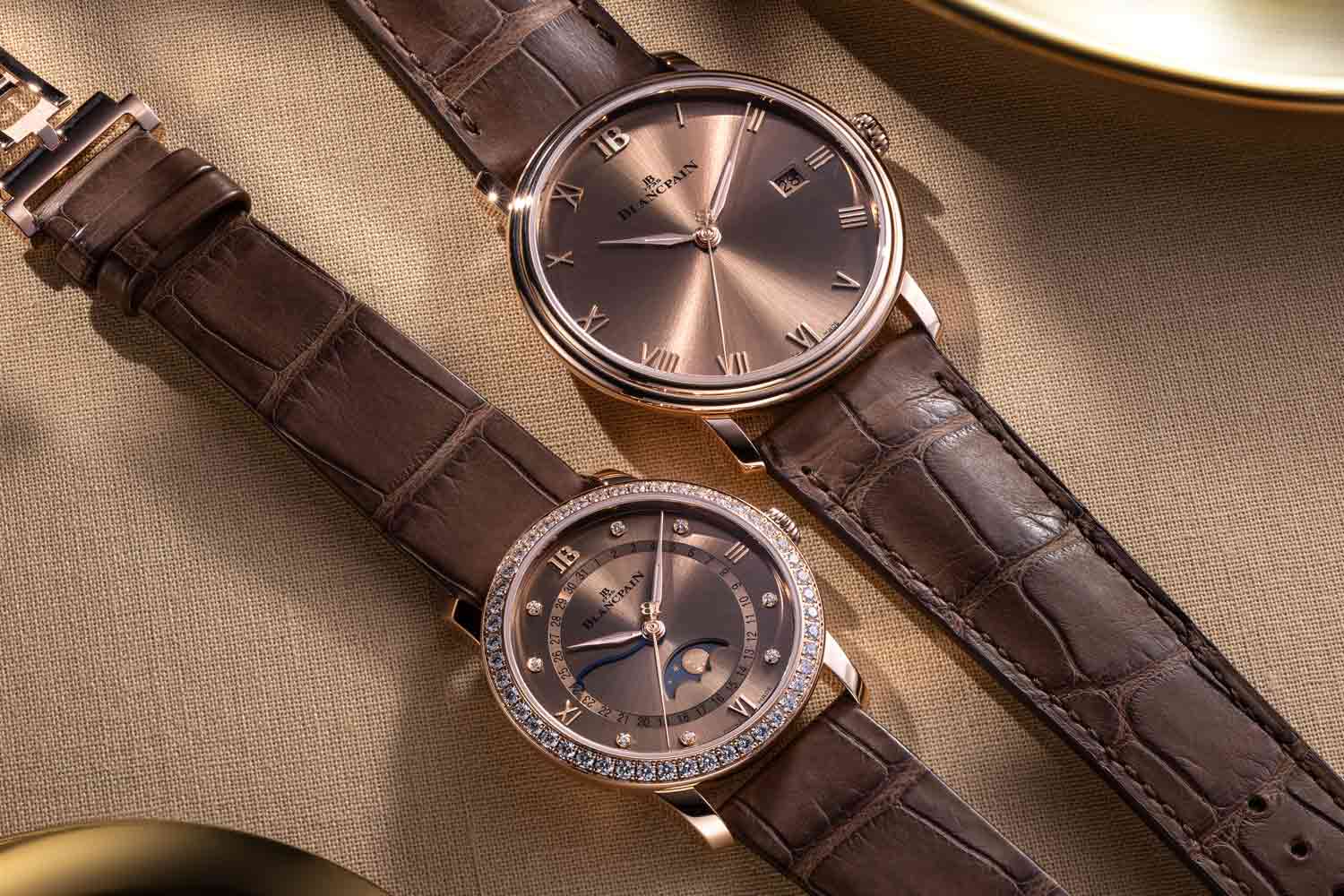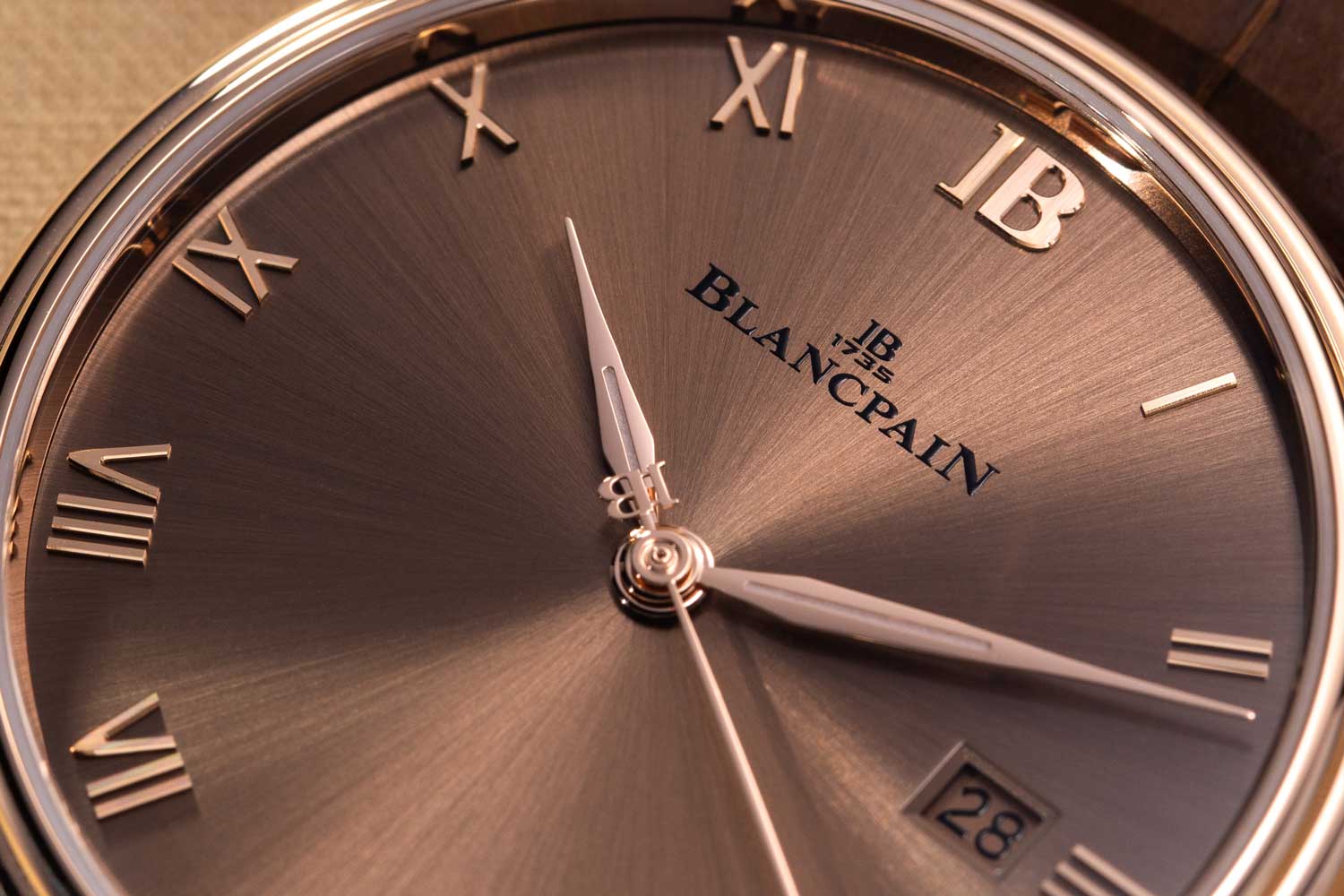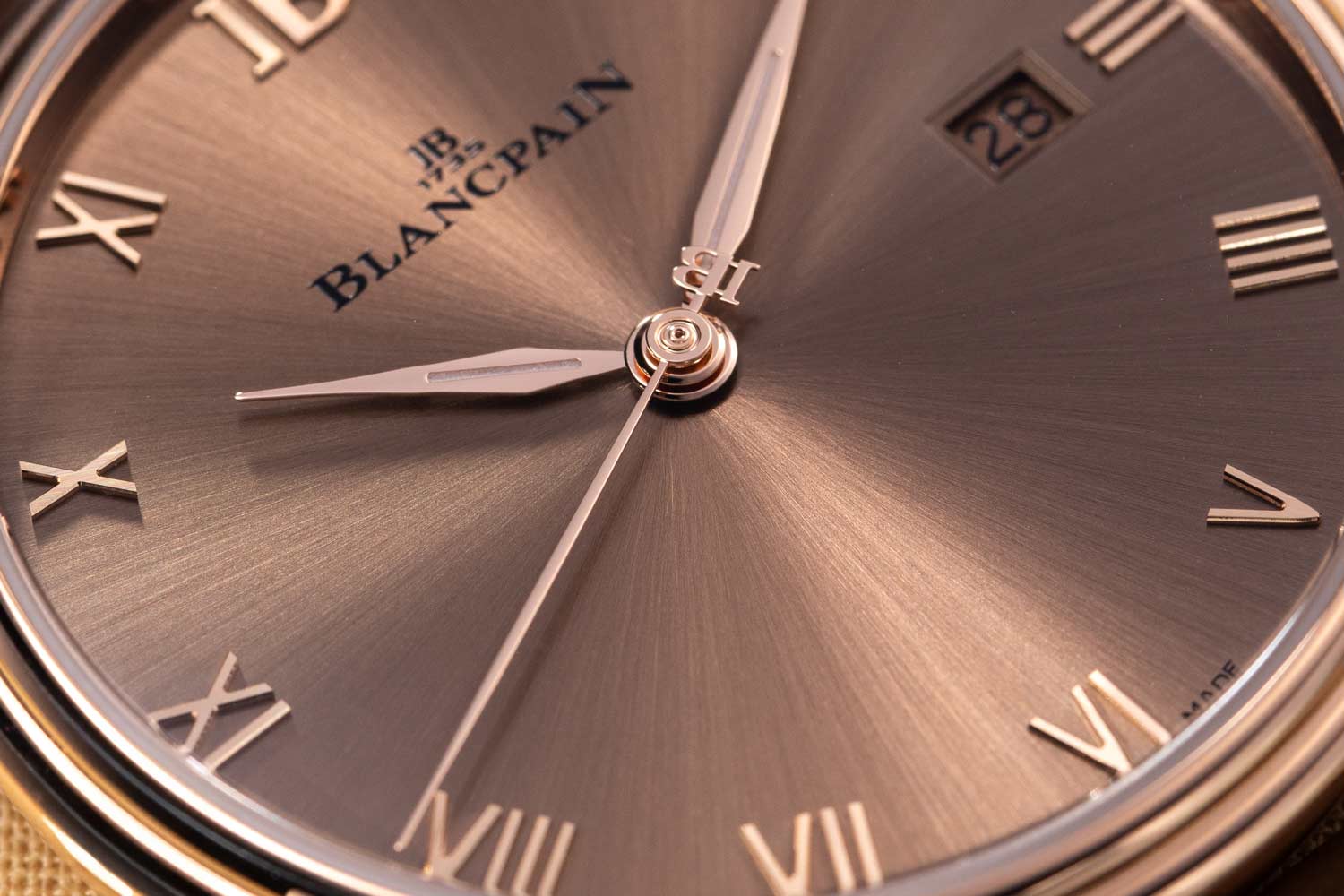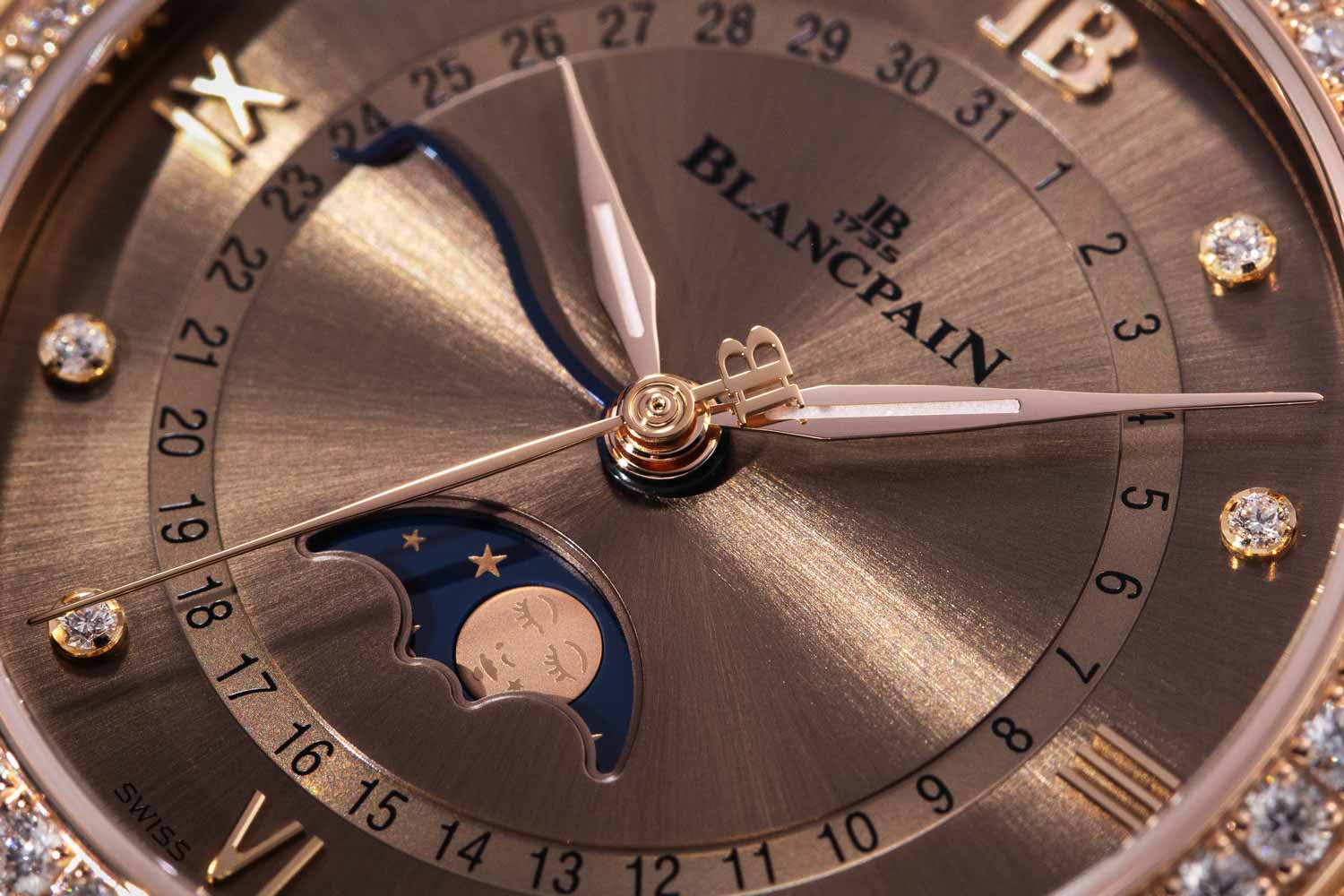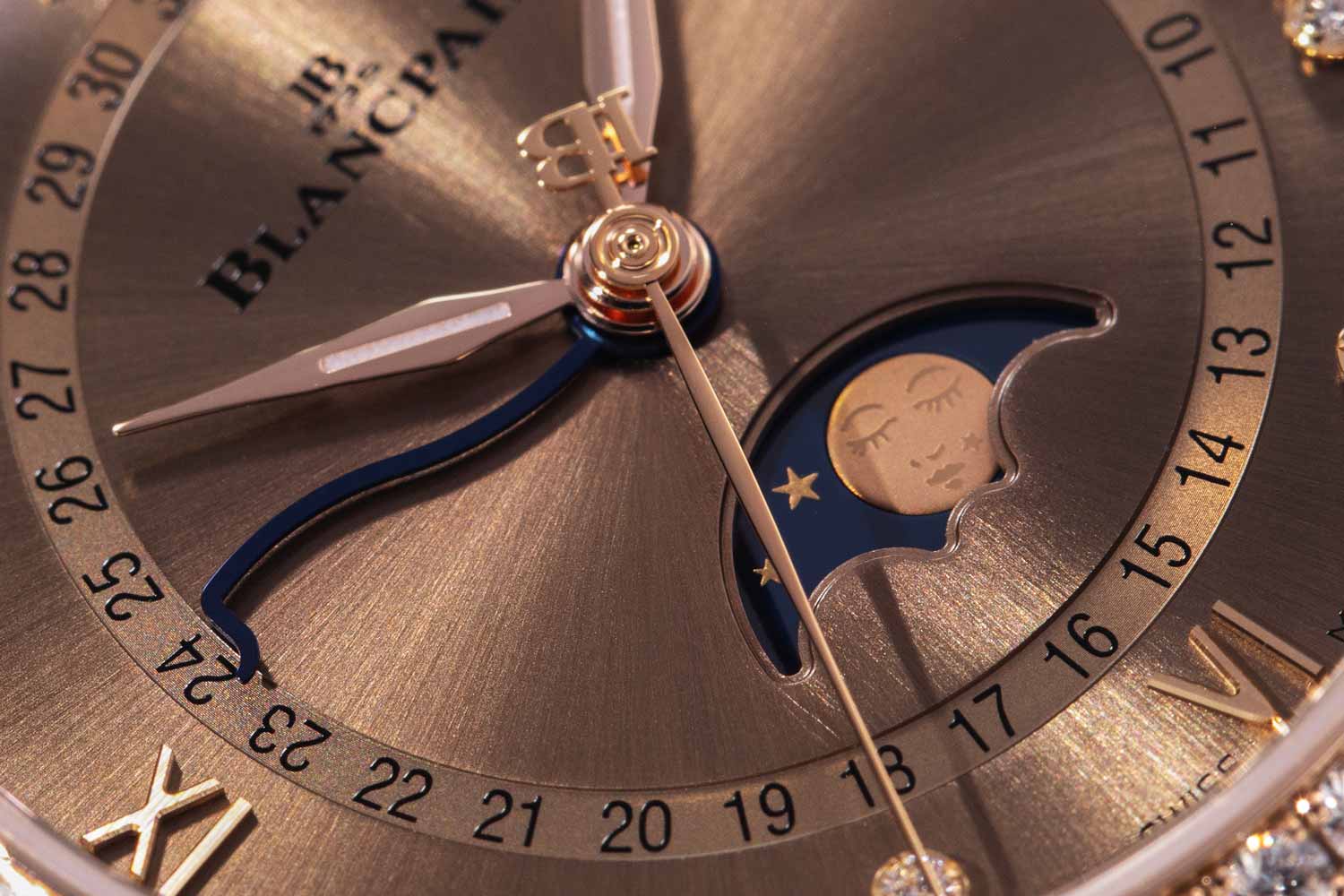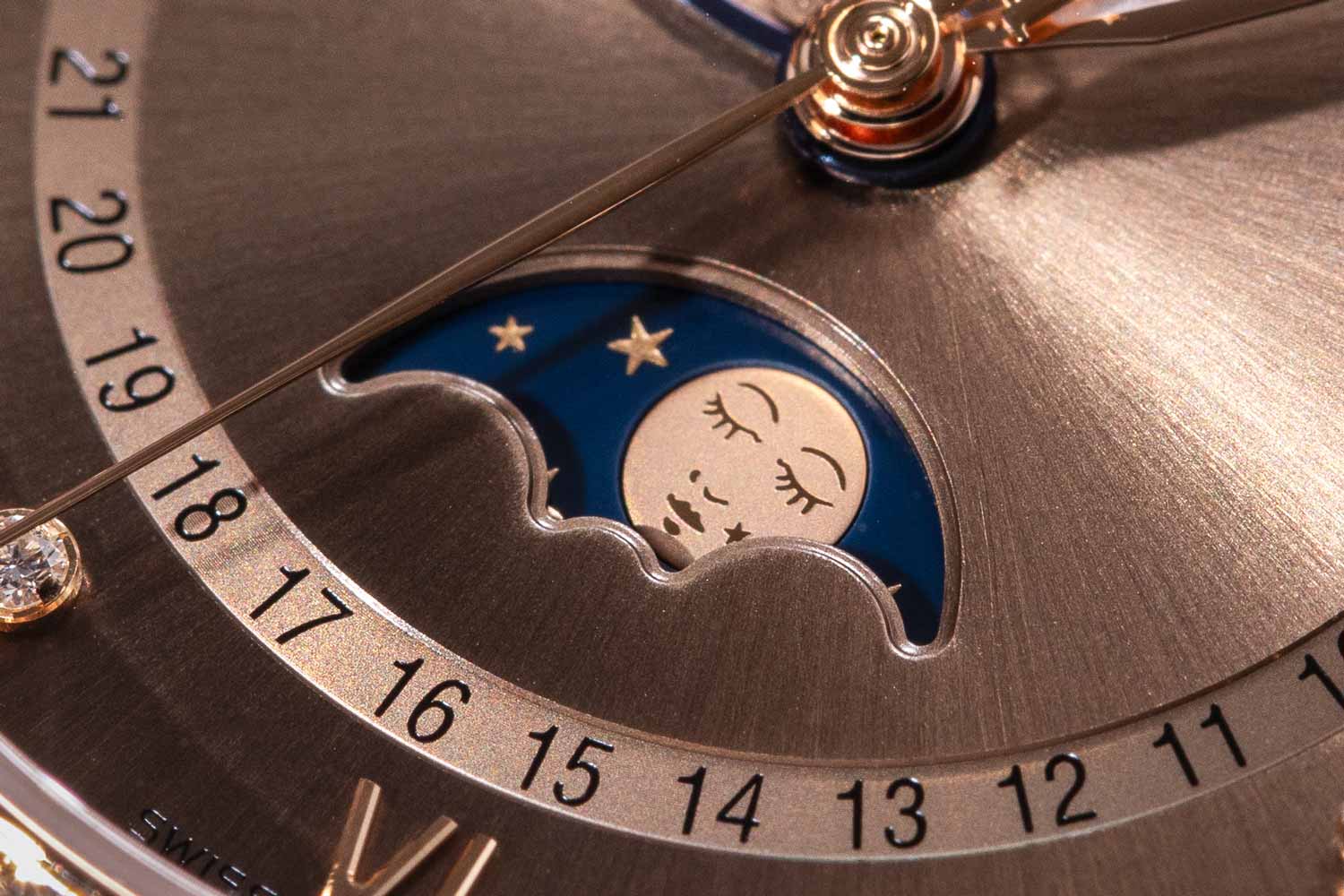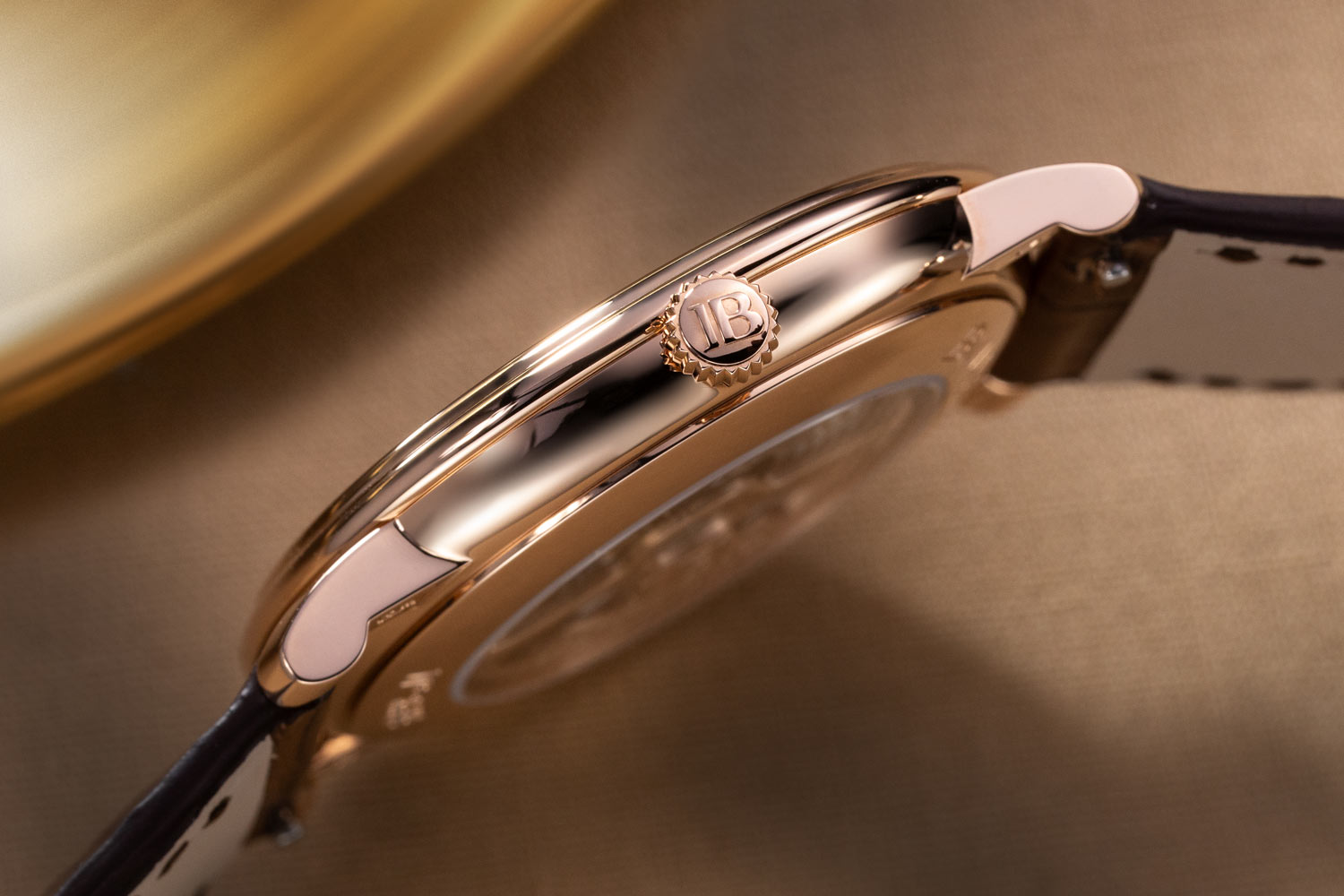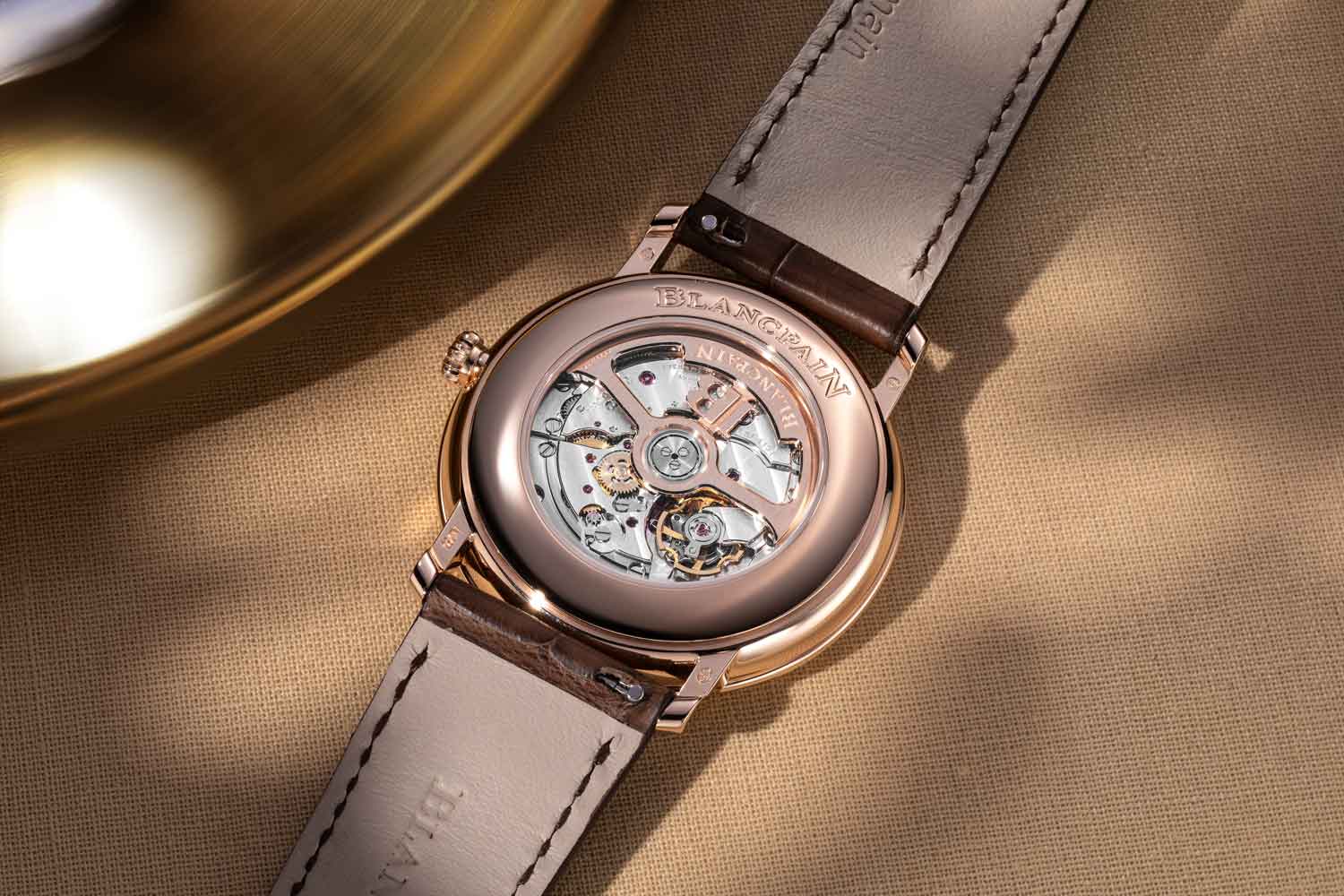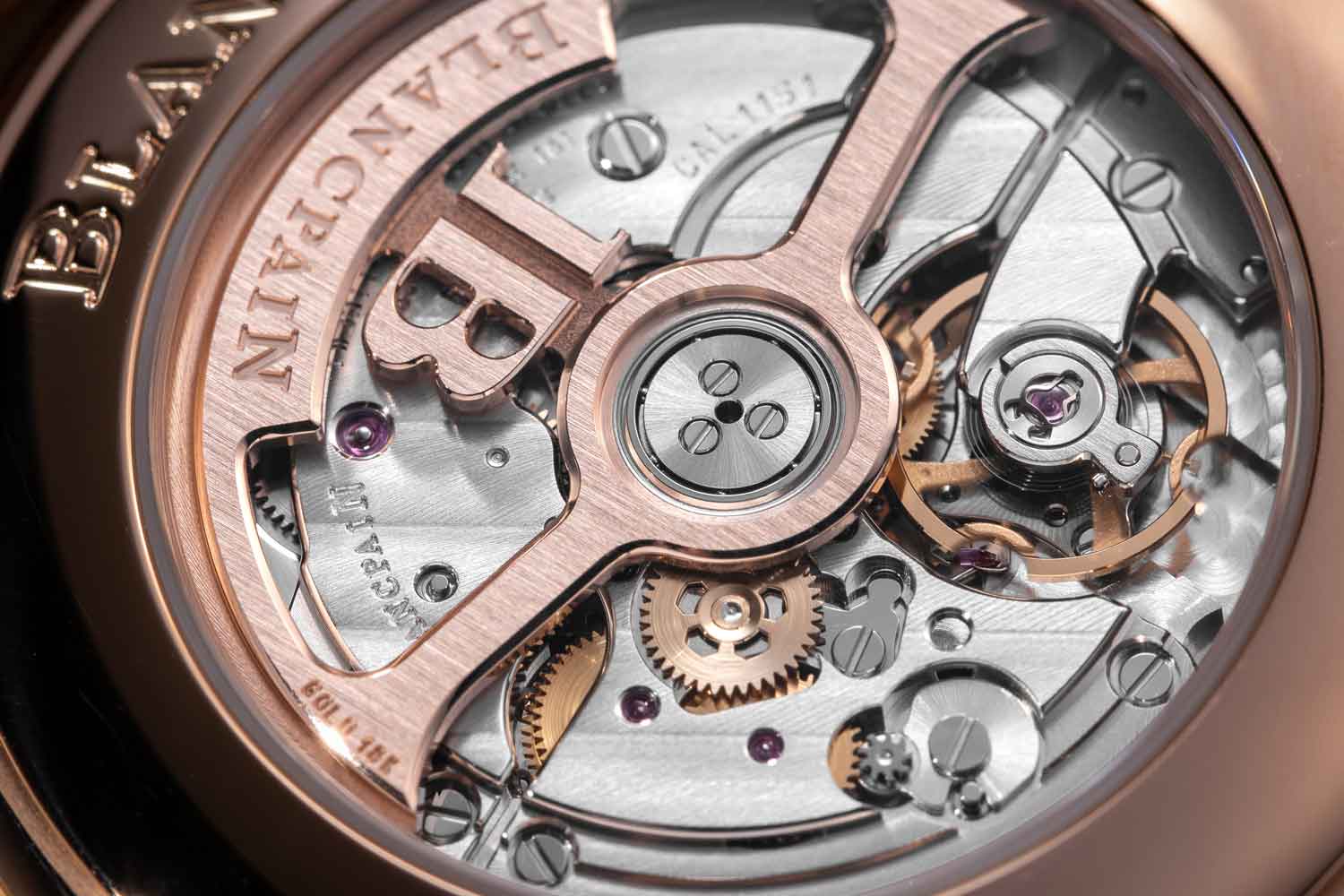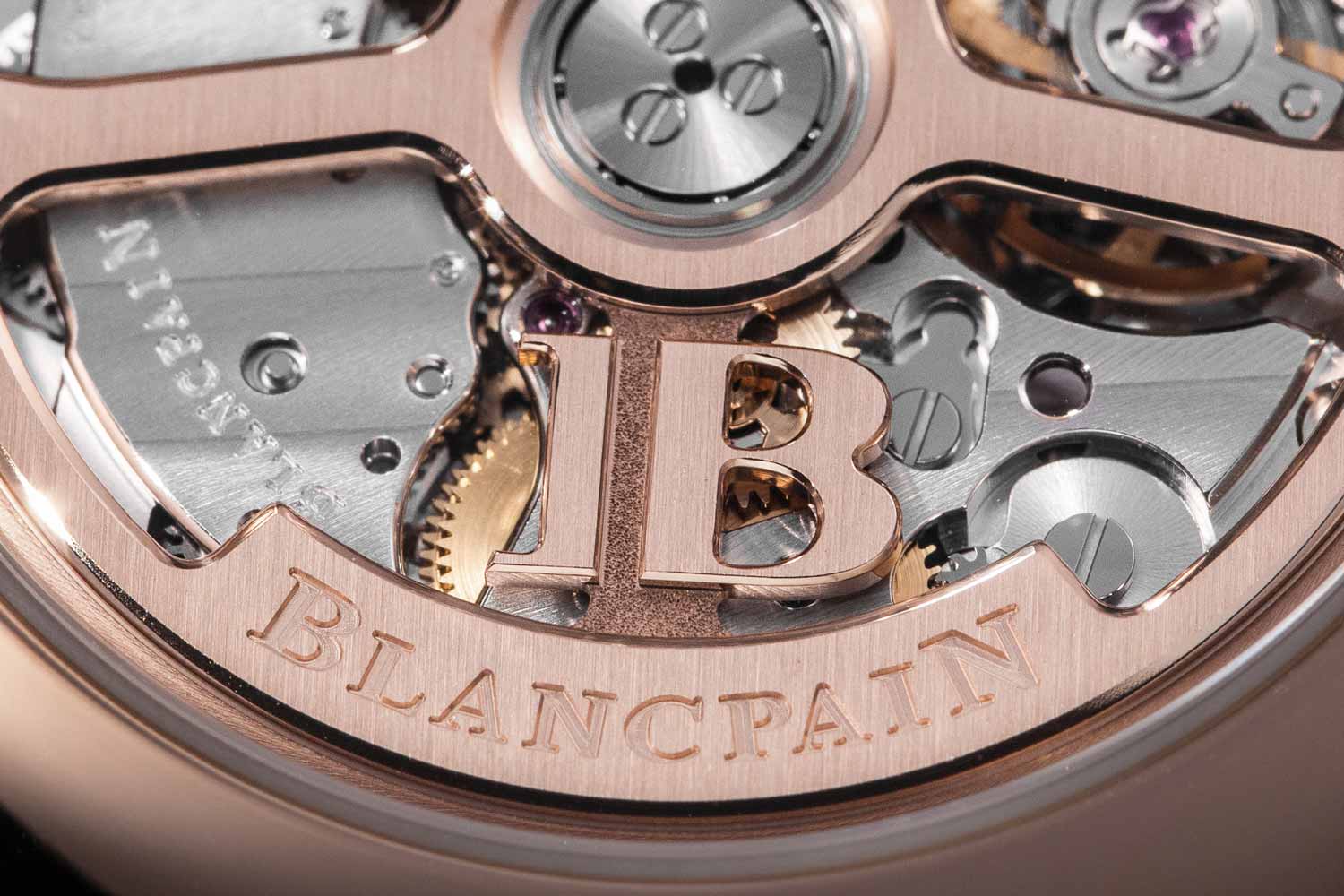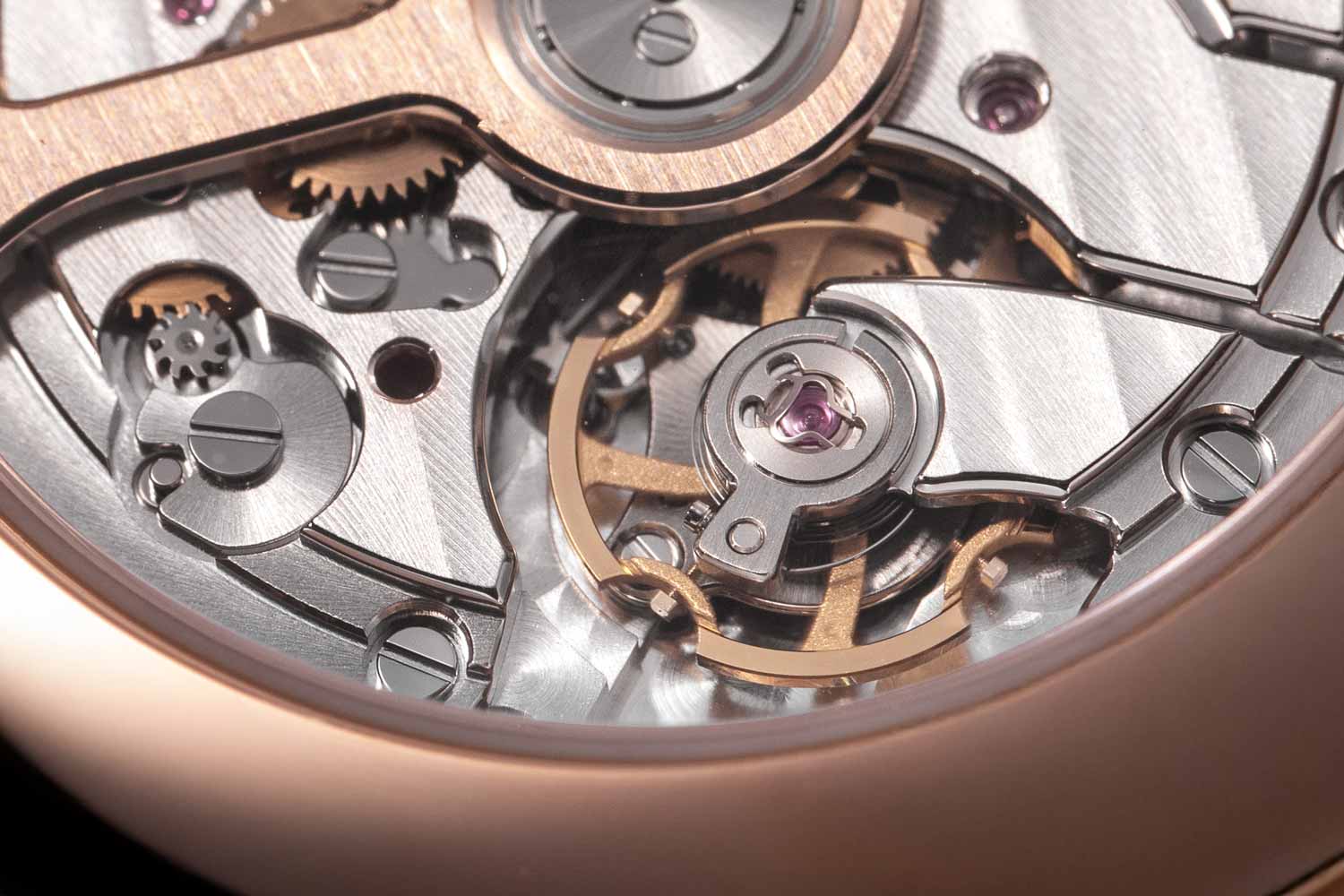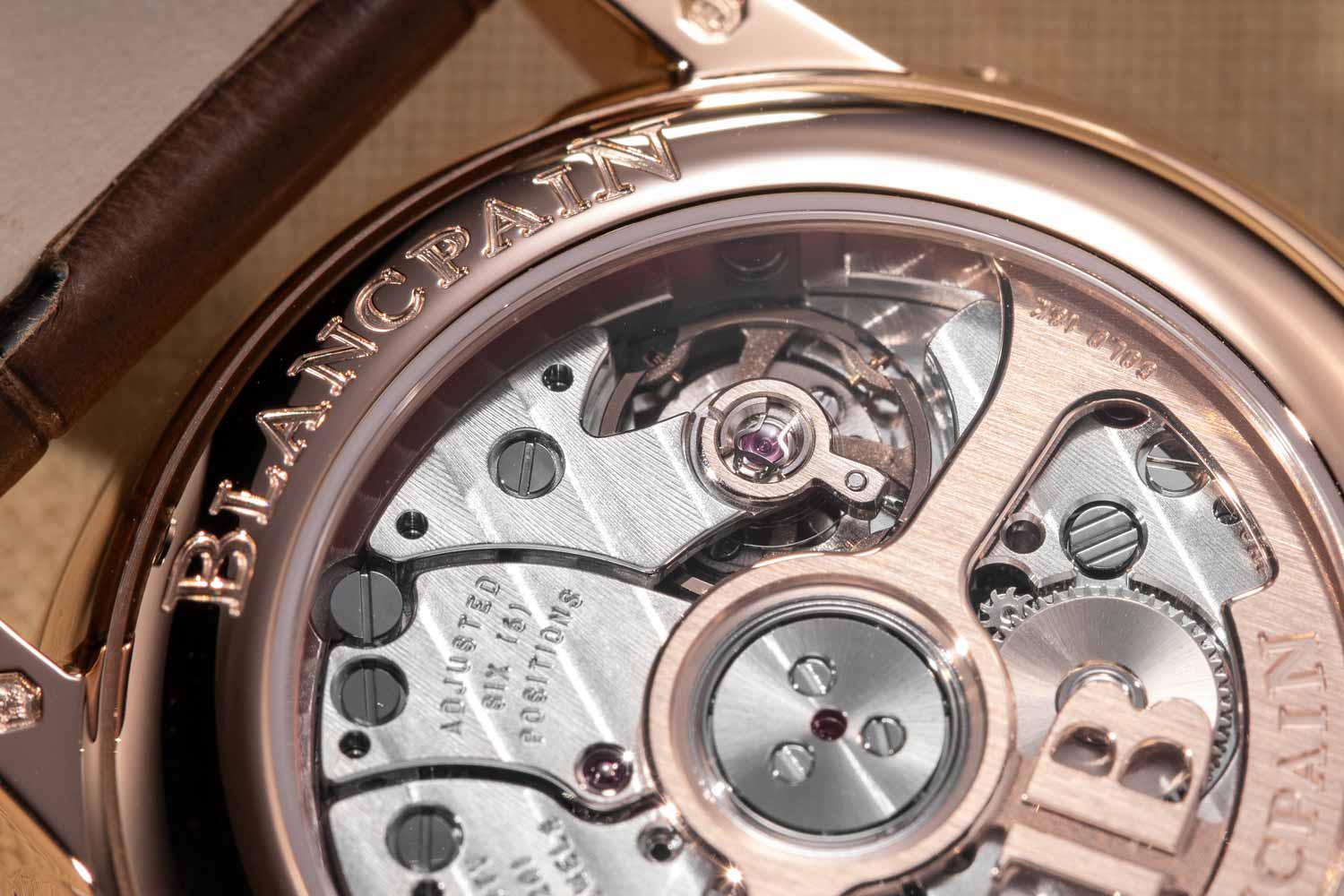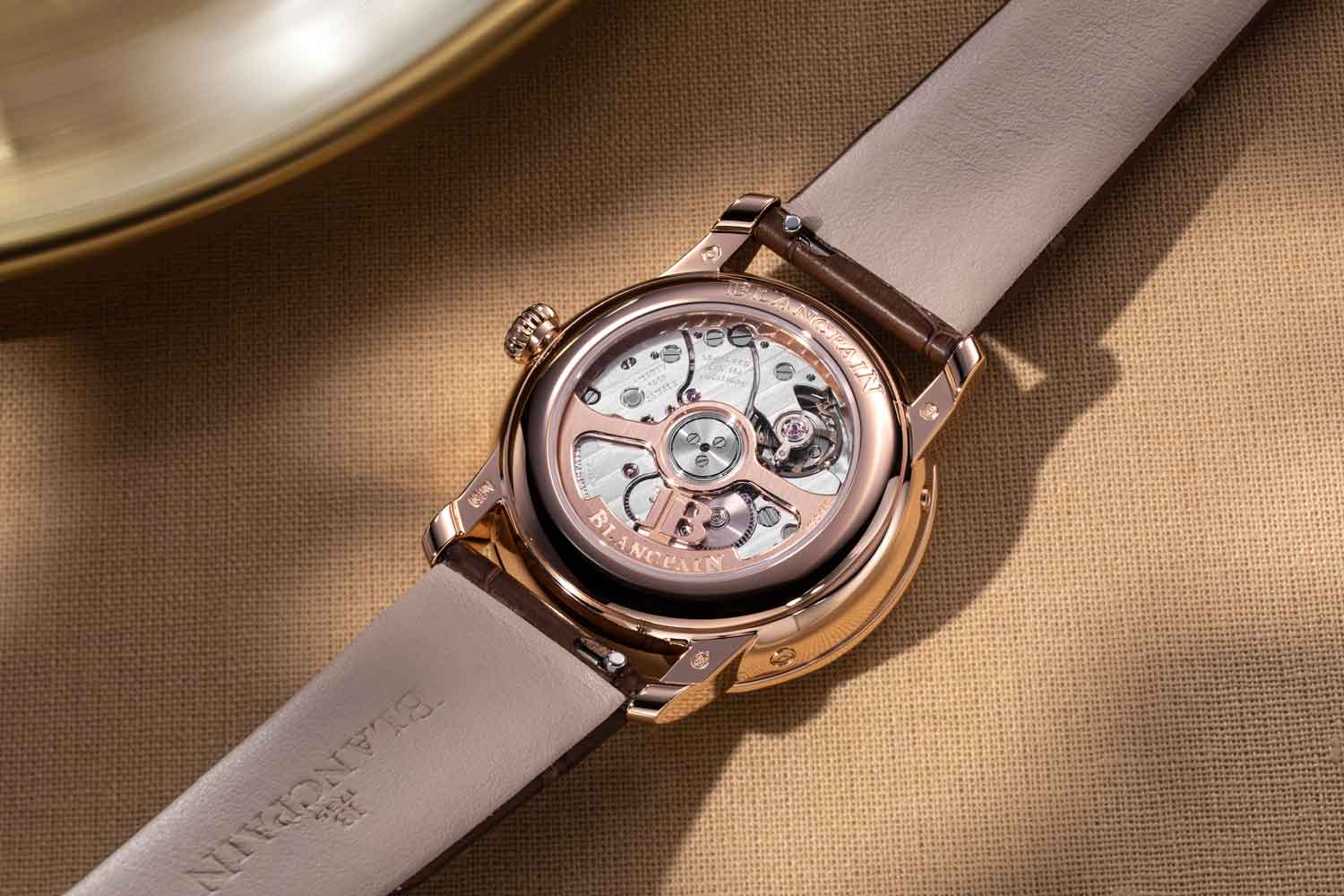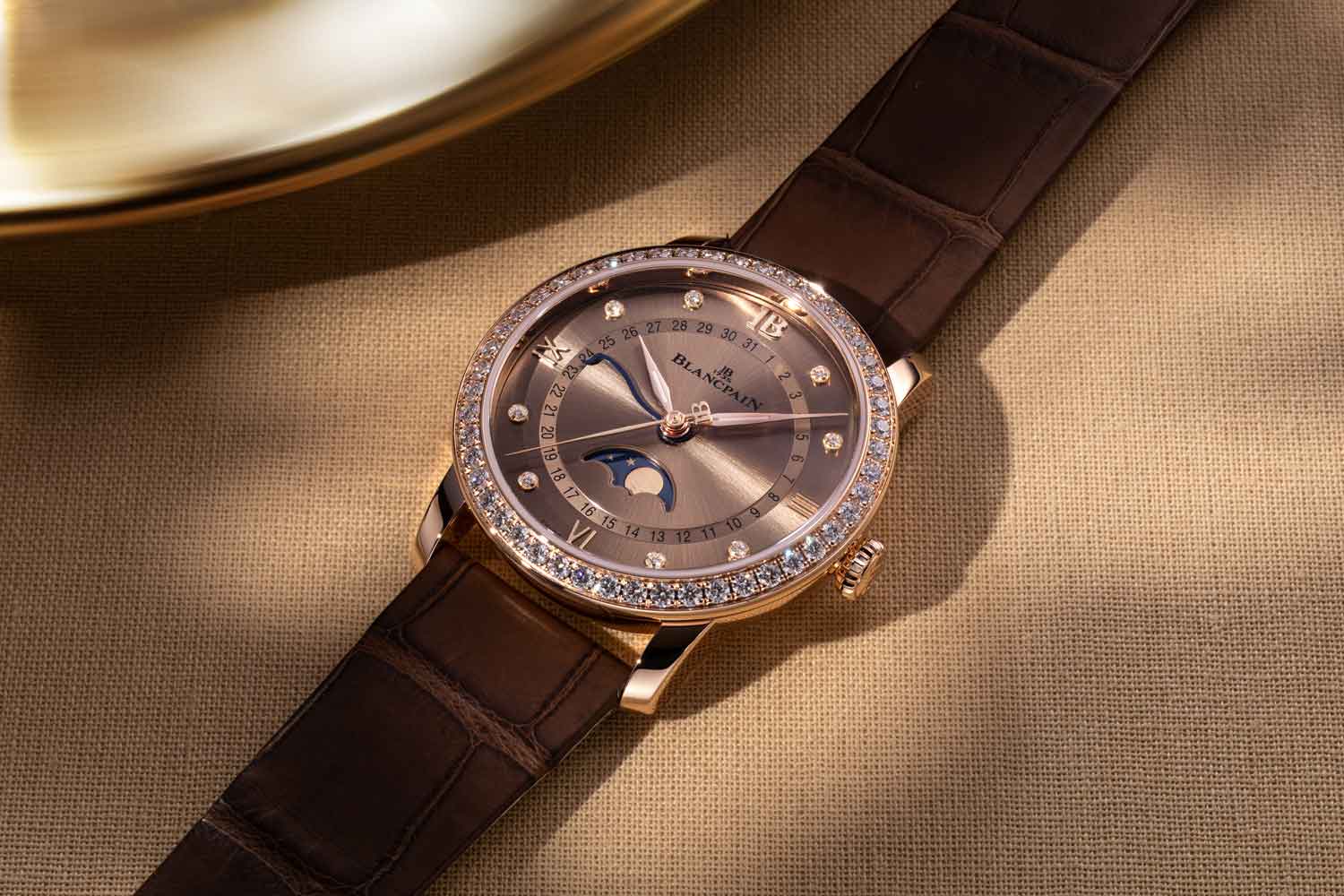One of the oldest names in watchmaking, Blancpain has just introduced a new series of Villeret models to refresh its long-standing collection. A total of 16 references were unveiled across three familiar models: the time-only, the moon phase, and the complete calendar. Each comes in various metals and, more importantly, with new and interesting dials. The highlight is the version with the golden brown dial, a tone Blancpain aptly describes as an autumnal shade.
Golden brown, though just a new colour, is an inspired choice as it marks a departure from Blancpain’s usual palette while remaining refined and elegant. The new dial draws attention not only to the brand’s timeless design language but also to its movements, which are beautifully hand-finished for their price point. As we’ll see later, it also comes with a few subtle refinements to complement the new palette.
Golden hour for the Villeret
Blancpain was brought back to life in 1983. The Villeret collection, though officially named only in 2003, grew directly out of the design language that has defined the brand since the early 1980s. You can still see the connection between today’s Villeret and those early models: the thin case, the stepped bezel, and the clean dial with short Roman numerals. Back then, Blancpain produced six watches in the same 33 mm case, a meaningful achievement at a time when quartz dominated the market.
This design came to represent Blancpain’s identity. Over time, however, it slipped from the spotlight as attention shifted to the Fifty Fathoms, which found renewed interest amid the growing appetite for sports watches and, more recently, the Swatch collaboration.
It makes sense, then, for Blancpain to turn its focus back to the Villeret. A light redesign and a new colour palette may be enough to draw fresh attention to a watch that has always embodied the brand’s most traditional side. The new dial, radially brushed like most metallic dials, has more depth than it first appears. Its colour shifts from dark chocolate to bronze to almost gold depending on how the light catches it, giving the watch a younger, more relaxed character.
Several details have been refined to complete the update. On the time-only 40 mm Ultraplate, for instance, the 12 o’clock numeral has been replaced by a simple applied “JB” logo, a small but noticeable change. The hands have also been reworked: the former leaf-shaped style gives way to a more angular silhouette. Whether that’s for better or worse is a matter of taste. The hands are now filled with luminous material for better legibility in low light, a rare feature for a dress watch but a practical one.
The same formula extends to the smaller 33 mm Phase de Lune designed for women (there’s also a men’s version with a complete calendar and moon phase at 40 mm). It carries the same large applied logo at 12 o’clock and the luminous hands. Yet the watch stays classical where it matters. The blued steel serpentine hand for the date is wonderfully traditional and gives the watch real character, setting it apart from most moon phase models on the market, regardless of whether they’re made for men or women. And naturally, the moon phase disc comes with a distinctive expressive face in 18k red gold, set against a dark blue ceramic base.
It’s worth mentioning that the Phase de Lune comes with diamonds that are cleverly adapted into the design. The hour markers, for example, have round frames around the diamonds to give them a pin-like look, while the bezel has a full ring of diamonds. Together with the 33 mm size, it’s a really elegant and classy watch, yet not just another blingy piece, as the movement inside is quite technically adept.
In terms of the case, all versions share an excellent design. The bezel is double-stepped for a traditional look, while the case middle slopes downward like a shallow bowl so it sits better on the wrist and wears with a lower profile. The lugs are short and gently curved, helping the watch hug the wrist comfortably.
Bang for the buck movement finishing
It’s quite common today for even top brands to rely on machines to finish their movements, often resulting in flat, uniform bevels instead of rounded ones. Not Blancpain though. Like its sibling Breguet within the Swatch Group, Blancpain remains one of the best-kept secrets in terms of movement finishing for its price point. All its calibres, including those in sports models like the Fifty Fathoms, feature attractive rounded bevels. Of course, these aren’t executed to full artisanal standards, as that would drive costs up quickly, but the result is still impressive.
The rounded bevels are a telltale sign of hand finishing. In this case, they likely begin as machine-cut angles that are then polished by hand-held tools, rather than being shaped entirely by hand from the start. Still, the resulting curve and shine carry the warmth and effort of the finishers’ craft, giving the movement an unmistakable human touch.
That said, this level of finishing is typical of Blancpain. What’s new here is the rotor. It’s now solid gold and skeletonised, offering a clearer view into the movement. The rotor itself is beautifully finished with brushed surfaces, polished bevels along the edges, and sandblasted recesses. It’s quite impressive, especially with its elaborate lines and curves, as the JB logo appears as a standalone design element.
Finishing aside, the movement stands out for its classical layout. It features multiple bridges shaped in elegant curves, a design language from another era that is rarely seen in modern movements. Overall, the movement offers good value compared with those from the holy trinity, especially in the steel version of the model.
But make no mistake, the movement is far from outdated. In fact, it is thoroughly modern, equipped with a silicon hairspring just like the models mentioned above. The Calibre 1151 in the Ultraplate, for example, delivers a very contemporary 100-hour power reserve, which is four days and four hours, quite impressive considering the watch measures only 40 mm across and 8.7 mm thick. The Phase de Lune, however, uses a smaller movement, the Calibre 913QL.P, which offers 40 hours of reserve. The men’s Complete Calendar Phase de Lune comes with the Calibre 6654.4, which provides 72 hours of power reserve.
Concluding thoughts
The facelift given to the Villeret is well executed, preserving all its classical strengths. It remains one of the few collections still untouched by passing trends, yet it gains a few tasteful updates for a fresher look, such as the handsome golden-brown dial.
Most importantly, the watches continue to offer strong value thanks to their excellent quality, particularly in movement finishing. The steel versions are especially accessible, with the Ultraplate starting at CHF 9,900, making it a very competitive option in its category. Even the gold models, especially those with complications, are priced fairly, making them an appealing step up from the steel versions while still well below haute horlogerie price levels.
Tech Specs: Blancpain Villeret Ultraplate
Movement: Cal. 1151; automatic; 100 hours power reserve
Functions: Hours, minutes, seconds, and date
Case: 40 mm × 8.7 mm; 18k red gold or stainless steel; water-resistant to 30 m
Strap: Beige, honey or brown leather strap with folding clasp
Availability: At boutiques and authorised retailers
Limited edition: No
Price: CHF 9,900 (steel); CHF 20,500 (gold)
Tech Specs: Blancpain Villeret Quantième Phases de Lune
Movement: Cal. 913QL.P; automatic; 40 hours power reserve
Functions: Hours, minutes, seconds, date, and moonphase
Case: 33.2 mm × 10.4 mm; 18k red gold or stainless steel; water-resistant to 30 m
Strap: Blue-grey, honey or brown leather strap with folding clasp
Availability: At boutiques and authorised retailers
Limited edition: No
Price: CHF 16,400 (steel); CHF 24,400 (gold)

